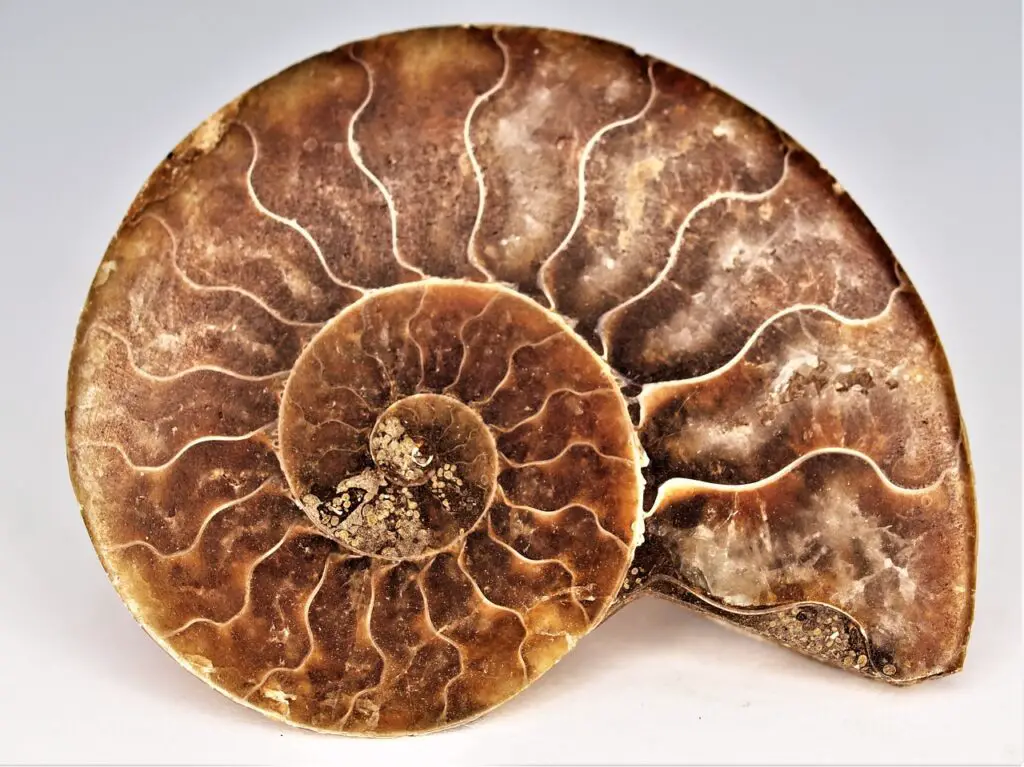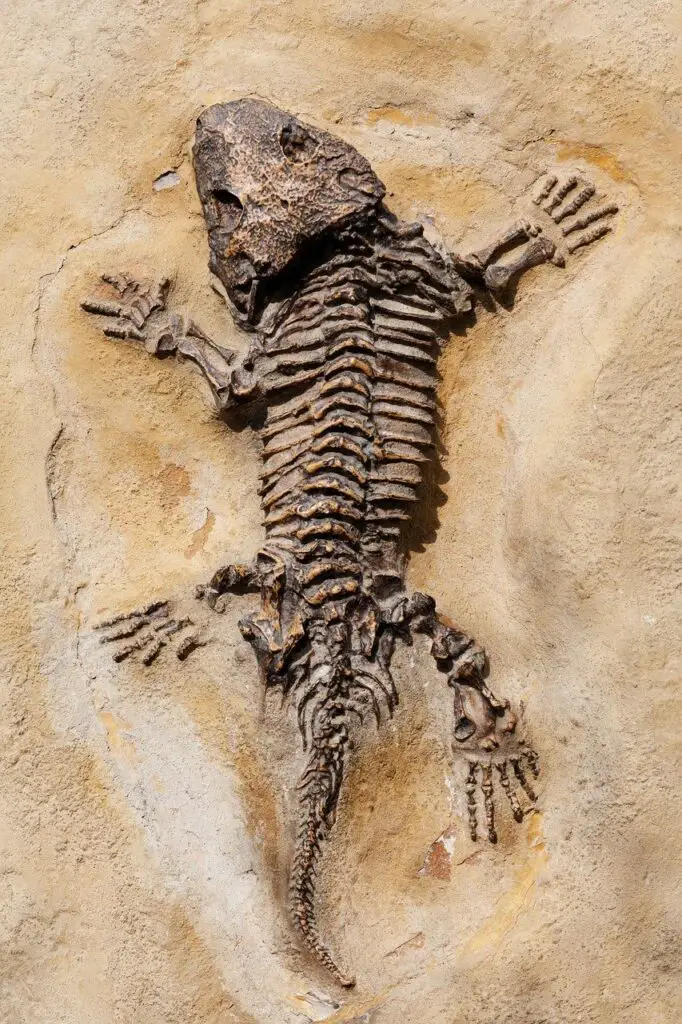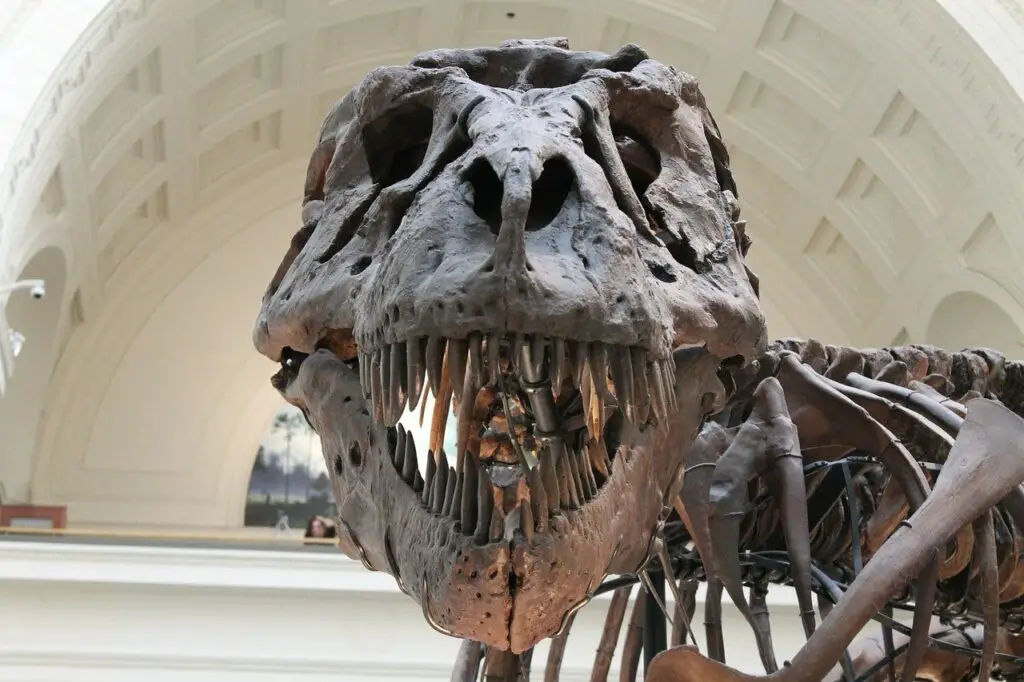How Do Fossils Provide Evidence of Evolution?
- How Do Fossils Provide Evidence of Evolution? 6 Things to Know…
- 1. Fossils are the preserved remains of previously living organisms or their traces
- 2. Fossils provide insights into evolution over long timescales
- 3. Fossils help us understand the evolutionary histories of present-day species
- 4. Fossils explain macroevolution of organisms
- 5. Fossils document the existence of now-extinct species that are related to the present-day species
- 6. Fossils help us understand the permineralization process
Evidence of evolution comes from many different areas of biology. These are body anatomy, embryology, biogeography, molecular biology, direct observation, and fossils study.
Here, in this post, we’ll only talk about the evidence of evolution from fossils.
Fossils are actually considered strong evidence of evolution. It’s because fossils document the existence of now-extinct species that are related to the present-day species.
Fossils indicate the gradual evolution and prove that organisms from the past are not the same as those found today. It reveals the features and demonstrates a change in characteristics of an ancestor for comparison against living descendants.
Fossils are the preserved remains or traces of animals, plants, and other organisms from the past.
Fossils shows how life originated from a very simple form to the present day more complex form.
Fossil markings present in rocks of all ages shows how the simplest organisms are found in the oldest layers of rocks, and fossils of more complex organisms in the newest layers of rocks.
By determining the ages of the layers of rock via. the geological time frame fossils tell us when organisms lived, as well as provide evidence for the progression and evolution of life on earth over millions of years.
In this way, the evidence from fossils supports Darwin’s theory of evolution, which states that simple life forms gradually evolved into more complex ones.
Let’s know more about it, in detail. So, just keep reading…

Ammonite fossil 
Lizard fossil 
Tyrannosaurus fossil
How Do Fossils Provide Evidence of Evolution? 6 Things to Know…
1. Fossils are the preserved remains of previously living organisms or their traces
Fossils are the preserved remains of previously living organisms, or their traces. A fossil can preserve an entire organism or just part of it.
It shouldn’t be confused that fossils are the real decayed biological remains of the ancient organisms. Fossils are the mineralized rocks particles only, that have taken the shape of the dead organisms.
The preserved fossils of an organism are also called body fossils because they provide quick and detailed insights about the shape and structure of bones, teeth, shells, leaves, exoskeleton, etc. These provide direct evidence of ancestral forms.
The examples of preserved fossils include the shapes and structures of bones, shells, exoskeletons, stone imprints of animals or microbes, that got preserved in amber, petrified wood, oil, and coal.
The trace fossils are the ancient markings of an organism that include footprints, tooth marks, burrows, and faeces (coprolite). These provide indirect evidence of ancestral forms.
The examples of trace fossils represent activities that occurred while the animal was alive like their tracks, burrows, eggshells, nests, tooth marks, gastroliths (gizzard stones), and coprolites (fossil feces).
These preserved remains and traces are the fossil records that have provided us with a quick peek into the evolutionary history of the various extinct and non-extinct ancestral organisms that include both plants as well as animals.
2. Fossils provide insights into evolution over long timescales
Fossils are great evidence in evolution to get an accurate and deep intuitive understanding of evolution that has occured over the various time scales.
In order to understand how old an organism is, we need to study its fossils. And, in doing so, we need to understand the timeframe of each rock where the fossil is seen.
Over the passage of millions of years of history, the rocks forms new layers above the previous ones. These layers are actually termed as strata.
Strata are the layers of rock, or sometimes soil. In nature, strata come in many layers.
The rocks where the fossils are formed have also build up in layers called strata. The strata provide a sort of timeline, with layers near the top being newer and layers near the bottom being older.
The fossils that are seen in different strata layers are ordered by their positions in accordance to the geological timeframe.
The fossils of old strata layers show that the organisms are very old (may be millions of years old) and, those of the new strata layers shows that the organisms aren’t so old (may be thousands of years old).
This helps estimate the ages of fossils across locations at various levels of strata.
For example: Remains of animals and plants found in strata of sedimentary rock deposits give us an indisputable record of past changes through time. The old strata contains simple prokaryotic/eukaryotic organisms, and the new strata layers contains complex eukaryotic organisms.
3. Fossils help us understand the evolutionary histories of present-day species
Fossils are important evidence for evolution because they show that life on earth was once different from the life that is found on earth today.
A fossil is just the preserved remains of a dead organism from millions of years ago.
It literally explains how our extinct ancestors were and how they had once developed themselves physiologically in order to better withstand the environment.
Fossils explain Darwin’s theory of evolution, which states that simple life forms gradually evolved into more complex ones and in doing so it has developed various characteristics that are present in our bodies as well.
According to the natural selection theory of evolution, it is stated that the organisms that are fit and those that can adapt to the environment can survive well. And, those that don’t are killed or destroyed.
This indicates how the organisms that were fit survived to the present-day ones. And, those that weren’t fit enough died and had turned into fossils. Those fossils of the unfit ones have now become useful stuff for studying evolution.
Thus, by studying the fossil records we can only get a bit of understanding of how the organisms have evolved by natural selection thus, helping us understand the evolutionary histories of present-day species.
For example: The fossil of Archaeopteryx is a very crucial fossil for scientists wanting to understand how reptiles have evolved via. natural selection or so into feathered flyers.
4. Fossils explain macroevolution of organisms
Evolution can take place on a small-scale or large-scale. Small-scale evolution is called microevolution and large-scale evolution is called macroevolution.
Microevolution is just a small evolution like changing a few genes leading to the creation of new alleles within a population.
Whereas, macroevolution is a very large-scale evolution that results from the sum total of all of the microevolution that took place within a population. This can lead to the formation of new species i.e speciation.
Microevolutionary changes usually occur in small timeframes and so are not frequently observed in the fossil records. It’s all because the processes that govern evolutionary changes within species are thought to occur over much shorter time scales that simply can’t be determined studying the strata layers.
In contrast, macroevolutionary changes occur in large timeframes and so can be easily observed in the fossil records. It’s all because the evolutionary changes within species occur over much larger time scales (maybe between many thousands of years) that can be easily determined studying the strata layers.
Thus the fossils help understand the macroevolution of organisms and recognize their evolutionary changes above the species level.
For example: The fossils show how birds and arthropods have macro-evolved over the course of history. The wings of birds and bats were initially arms and hands; and the mouthparts of various arthropods were legs.
5. Fossils document the existence of now-extinct species that are related to the present-day species
Fossils document the existence of now-extinct species, showing that different organisms have lived on Earth during different periods of the planet’s history.
Fossils can also help scientists reconstruct the evolutionary histories of the present-day species.
Paleontologists can determine the age of fossils using methods like radiometric dating and categorize them to determine the evolutionary relationships between organisms.
The fossils can show how an organism has evolved over the period of evolution and give an understanding of creating a family tree following the idea of convergent and divergent evolution.
By looking and studying at the fossils scientists can reconstruct and relate the evolutionary histories of now-extinct species to those of the present-day species by comparing the various physiological similarities and dissimilarities.
For example, some of the best-studied fossils are of the horse lineage. Using these fossils, scientists have been able to reconstruct a large, branching “family tree” for horses and their now-extinct relatives.
The horse lineage discovered from fossil evidence shows how horses have evolved from their now-extinct Mesophippus to now-extinct Merychippus to now-extinct Pliohippus to the present-day Equus caballus.
6. Fossils help us understand the permineralization process
How better the fossils have formed or, how was the situation when the organism died to turn into a fossil is a very helpful analysis for the proper understanding of evolution.
Permineralization is a process of fossilization that occurs when an organism is buried. Permineralization causes fossilization and fossilization showcases how evolution was occurring during the early times.
Permineralization is a process of fossilization that occurs when an organism is buried. The empty spaces within an organism (which are the biological spaces filled with liquid or gas during life) get filled with mineral-rich groundwater.
Minerals soon precipitate from the groundwater, occupying those biological empty spaces in the dead body of the organisms.
This process can occur in very small spaces, such as within the cell wall of a plant cell. Small-scale permineralization can produce very detailed fossils and so a very detailed analysis of evolution.
For permineralization to occur, the organism must be covered by sediment soon after death, or soon after the initial decay process.
The degree to which the dead remains of an organism are decayed when covered determines the later and better details of the fossil and fossilization.
Fossils usually consist of the portion of the organisms that were partially mineralized during life, such as the bones and teeth of vertebrates or the chitinous or calcareous exoskeletons of invertebrates. However, other fossils contain traces of skin, feathers, or even soft tissues as well.
The whole process that had created the present-day fossil by permineralization of the ancient living organisms helps to better understand the process of evolution and do also provide very clear evidence of evolution as well.
